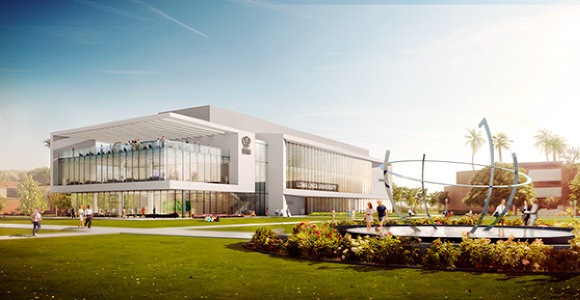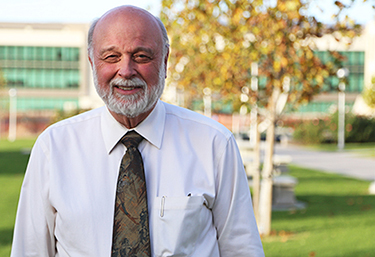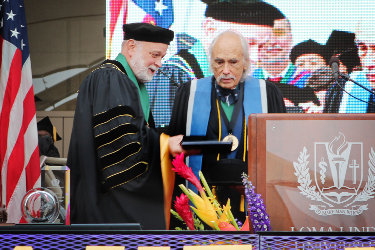 |
| February 2016 |
|
Several weeks ago we lost a humble giant, Dr. Lawrence Longo, at the age of 89. While valuing Loma Linda's traditional emphasis on medical education and quality clinical care, Dr. Longo felt the University also needed excellence in research and set out to model that effort. He established the Center for Perinatal Biology in 1973 and began an incredible legacy of continual National Institutes of Health (NIH) funding for the next 43 years, among the longest in the country. Just a month before his death, we recognized Dr. Longo and three of his colleagues: Bill Pierce, Charlie Ducsay, and current Center Director Lubo Zhang, for the remarkable accomplishment in receiving a perfect score on their latest NIH grant application of nearly $8 million. They continue to do groundbreaking research on fetal health and all the variables that impact it. I had the privilege of receiving periodic visits from Dr. Longo at my office. He had a wide-ranging mind, with interests in many issues of society, including medical history, art, and campus beauty. He was active in the American Osler Society, commemorating the life and example of this medical giant, and served as president of the society at one point. He had a remarkable collection of Nigerian medical artifacts as well as books on the history of medicine. I visited him at his home to get some documents signed a year ago, where it was clear he enjoyed the beauty of nature and flowers. His kitchen table was just what you would expect from a "mad scientist," piled high with journals, papers and his latest writing project. Research has not always had a high priority at Loma Linda. In the 1950s, when Frank Lemon and Richard Walden proposed the first research on Adventists, comparing the causes of death among Church members in California to an American Cancer Society cohort, there was considerable debate in our Board meetings about whether this should be done. "What if we don't look so good; do we really want to know?" That first study, now called the Adventist Mortality Study, laid the groundwork for one of the largest prospective studies in the country, the Adventist Health Study, and subsequently Adventist Health Study 2, with 96,000 participants. We now all talk proudly of the results, showing increased longevity and productivity. But it was the fear of the unknown that gave our earlier leaders pause.
But we need to do more, much more. As part of Vision 2020, we are committed to building a new and unique research facility on campus, a place where scientists from multiple disciplines can rub elbows, bringing skills and perspectives from their own backgrounds to bear on common problems. Our plans are to build this in the center of campus, replacing Risley Hall, where many of us studied physiology and pharmacology, but which has largely aged out of usefulness. This new research complex will be three stories tall, nearly 100,000 square feet, with a blend of core facilities and equipment, flex space for junior faculty to get started, and a mixture of social and basic scientists. $50 million of our Vision 2020 goal will go toward this project, but we hope to raise more to fully equip the building as well as establish various endowment funds to support our researchers. To learn more, click here. Loma Linda faculty now publish over 500 peer-reviewed articles each year, a number that is climbing steadily. They study many different areas, but have a predilection to focus on seven core themes: Lifestyle/Vitality/Longevity; Maternal/Fetal/Neonatal Health; Regenerative Medicine; Infectious Disease; Cancer; Stroke/Brain Trauma/Neurological Diseases; and Health Disparities among Diverse Populations. A recent audit showed over 100 funded studies looking at various aspects of prevention. There are some exciting new areas of inquiry that fit so well into our culture. Current work by the perinatal group and Penny Duerksen-Hughes is looking at the impact of epigenes, the switches that turn individual genes, and their expression, on or off. While we all have our basic DNA determined by our parents, it looks like we can influence our epigenetic switches and which of those genes manifest themselves. A mother's lifestyle practices during pregnancy may have a big influence on the future life and health of her baby. Adult diseases, such as diabetes, hypertension, and obesity, all at epidemic proportions in the world, may be determined to some degree by early fetal life and a mother's behaviors at that time. Could this impact be what the Bible talks about when it reflects on influences "unto the third and fourth generation?" It currently appears that consistent behaviors over several generations can actually make permanent changes in the genetic risk of various diseases. For these reasons, we feel strongly that Loma Linda University Health needs to make a firm commitment to growing our research emphasis on campus. We need a new building, and skilled faculty and students to push these boundaries. We need to strengthen this third leg of our academic health sciences center in addition to education and clinical services. The world is waiting for answers to questions which we are uniquely positioned to answer. We will need your help in accomplishing these goals of creating a system for taking research ideas from the laboratory to the patient and community. Our hope is to raise sufficient funds to build our new building in several years and launch a new wave of discovery. We want each of our students to be infected by this spirit of inquiry, which we believe is a key part of Loma Linda's commitment to the world. Nothing would have made Dr. Longo more proud or would have justified his confidence in Loma Linda. As he always said — "persevere."  Sincerely yours,
Richard Hart, MD, DrPH |
   |
|
Office of the President, Loma Linda University, Loma Linda, CA 92350 Copyright © 2016 by Loma Linda University |
February 5, 2016
Notes from the President -- A Culture of Inquiry
Share

 He graduated from Loma Linda University while it was still the College of Medical Evangelists in 1954, took a residency in OB-GYN at UCLA, and then answered the call to mission service and spent three years at Ile-Ife Hospital in Nigeria. Upon returning, he moved into an academic career, first at UCLA, then University of Pennsylvania, before finally returning to Loma Linda in 1968 to launch a remarkable career in research.
He graduated from Loma Linda University while it was still the College of Medical Evangelists in 1954, took a residency in OB-GYN at UCLA, and then answered the call to mission service and spent three years at Ile-Ife Hospital in Nigeria. Upon returning, he moved into an academic career, first at UCLA, then University of Pennsylvania, before finally returning to Loma Linda in 1968 to launch a remarkable career in research. It was into this early milieu that Dr. Longo gambled his future career. And it worked. He helped create a culture of inquiry on campus that has spread into multiple fields. We now embrace and have confidence in our researchers pushing the boundaries, from the widely respected work of Jim Slater, creating the world's first proton treatment unit, to Len Bailey and his pioneering work on infant heart transplantation. But there have been many others, from bench scientists to social scientists. We recognize one or two each graduation season now, and recruit promising young faculty who show potential for creating new knowledge.
It was into this early milieu that Dr. Longo gambled his future career. And it worked. He helped create a culture of inquiry on campus that has spread into multiple fields. We now embrace and have confidence in our researchers pushing the boundaries, from the widely respected work of Jim Slater, creating the world's first proton treatment unit, to Len Bailey and his pioneering work on infant heart transplantation. But there have been many others, from bench scientists to social scientists. We recognize one or two each graduation season now, and recruit promising young faculty who show potential for creating new knowledge.